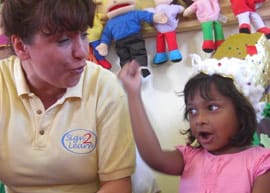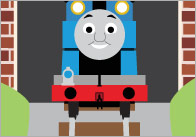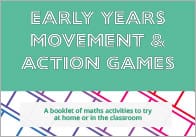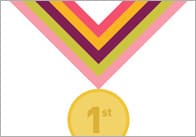Say it, sign it, and remember it: Using British Sign Language with hearing children

Using British Sign Language with hearing children to promote their storytelling and writing skills
Most young children in the UK have some knowledge of two languages. Not because their parents speak a language other than English, but because they encourage their children to watch children’s programmes on TV, and particularly a programme on CBeebies called Something Special. Their second language is MAKATON, which is a system for signing words in English, based on British Sign Language (BSL). Something Special features MAKATON throughout the programme, and this has led children to understand that as well as talking with your mouth, you can use your hands as well.
From my experience, babies and toddlers, who are almost at the stage that they are using single words, are greatly helped by learning to sign, as long as the adults who sign with them talk or sing at the same time. The children are not learning to sign instead of talking, but in order to help them remember and use words. The children do not have a hearing loss, though signing is used with most children who are diagnosed with a hearing impairment.
I was initially quite sceptical that children who hear quite well can benefit from using sign language. That is until I met Katja O’Neill of Sign2Learn. I first met Katja when I was leading the Every Child a Talker (ECaT) project in Luton. Katja was well-known in Luton settings as an advocate of BSL, which she promoted through her singing and signing sessions. She explained to me why signing has such an impact on children who hear well. “Recent research suggests that when children use their voices to say a word, and their hands to sign it, they activate both sides of their brains, which can make learning far more effective. If a child forgets a new item of vocabulary, he can generally remember the sign, which prompts his brain to remember the word. So instead of the word being on the tip of his tongue, he has it at his fingertips!”
I was fascinated, and wondered whether we could use BSL to develop particular aspects of language learning that some children were finding difficult. It is generally accepted that young children with rich vocabularies who are confident speakers go on to be effective learners in school. These children usually have an ability to tell a lengthy and interesting story, or recount a familiar tale, full of exciting sequencing words and phrases such as first, next, until, after that and finally and connectives such as suddenly, fortunately and unfortunately. This ‘narrative ability’ is an important part of language development, and a vital foundation for creative writing. There is an equally strong link between poor language skills at school entry and educational failure, and many practitioners had commented that children did not know any traditional tales, and certainly couldn’t recount them to adults or other children.
Sue Thomas, Senior Consultant for Early Years and Childcare in Luton, who worked with me to develop ECaT in Luton, was looking for ways to develop children’s narrative skills and vocabulary development. Sue had been inspired by the work of Pie Corbett, who is a storyteller and authority on children’s writing. Pie Corbett advises that adults and children should use gestures to emphasise key points in a story: words such as ‘unfortunately’, ‘suddenly’, and connective words such as ‘after that’ and ‘finally’. Unfortunately these words and phrases are difficult to teach, as they are hard to visualise, and tend only be used by children who already have advanced language skills.
Sue and Katja decided to investigate whether children could be taught actual BSL signs, rather than gestures, and whether this might help them to learn, remember and use some of those tricky but potentially exciting words and phrases.
Their initial pilot project involved 78 children from nursery and reception classes in three schools, most of whom were under five years of age. The teachers assessed the children using the Early Years Foundation Stage Development Matters statements for Language for Communication, as well as Dispositions and Attitudes. 76% of children were below age related expectations in Language for Communication, and 72% in Dispositions and Attitudes. Over an eight-week period, Katja visited each setting for 20 minutes per week. She told and signed along to two traditional tales: Goldilocks and the Three Bears for the first four sessions and the Gingerbread Man for the remaining four. The teachers told the stories between visits, used the signs in daily interactions, and encouraged the children to use the signs themselves in story telling. Katja left a pack of small puppets representing the stories, for the children to play with, and a set of line drawings of the signs, so that the teachers could remember and use them.
When the children were reassessed at the end of the eight week period, staff were amazed to find that now only 13% were below age related expectations in Language for Communication, and 21% for Dispositions and Attitudes. That’s around 60% improvement in just eight weeks! They found that the biggest improvement was for children learning English as an additional language. What was remarkable, and hugely exciting, was that children spontaneously began to use these words in their creative writing.
This success led to the development of Sign 4 Learning. This is a training programme and set of resources that are used in many schools throughout the UK. These include a poster with story telling signs for the classroom, finger puppet sets with individual stories and signs, and a DVD with signed stories for classroom use and adult training purposes.
There has been such enthusiasm for using signing to promote vocabulary development that another project was launched to look at how signing can be used to promote understanding of maths concepts and children’s use of maths vocabulary. More about this in my next blog!
Michael Jones is a freelance trainer specialising in young children’s language and learning. For information about his work and about Every Child a Talker visit www.talk4meaning.co.uk
For a detailed account of this research, contact Sue Thomas, Senior Consultant, Early Years and Childcare at [email protected] or Katja O’Neill of Sign2Learn at [email protected]
Michael Jones is a freelance trainer in young children’s communication. He led the Every Child a Talker project in three different boroughs. He has written widely on the subject of young children’s language and learning, and is co author of ‘Let’s get talking!’ and ‘Supporting quiet children’, both published by Lawrence Educational. To find out more about Michael’s work visit //www.talk4meaning.co.uk/.
Popular Teaching Resources
Stay Up To Date
Sign up for our newsletter and we’ll let you know when we create new early years resources.





